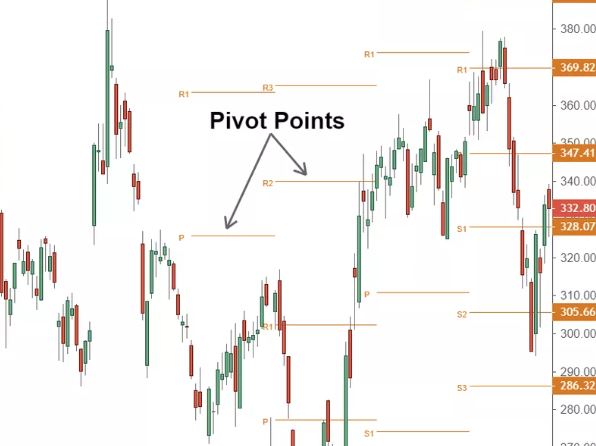Forex pivot points are an essential tool for intraday traders. They provide valuable information about potential support and resistance levels in the market, which can help traders make informed trading decisions. Pivot points are particularly useful for short-term traders looking to take advantage of price movements during the trading day. In this article, we will explore forex pivot points and how they can be used in intraday trading strategies.

Forex Pivot Points: What are they?
It is mathematically calculated that pivot points in the forex market are potential support and resistance levels. To calculate pivot points, the following formula applies, which calculates from the high, low, and closing prices of the previous day:
Pivot Point (PP) = (High + Low + Close) / 3
As well as the pivot point, additional resistance and support levels are calculated as R1, R2, and R3 for resistance levels and S1, S2, and S3 for support levels. The calculation for each of these levels is as follows:
R1 = (2 x PP) – Low
R2 = PP + (High – Low)
R3 = High + 2 x (PP – Low)
S1 = (2 x PP) – High
S2 = PP – (High – Low)
S3 = Low – 2 x (High – PP)
Pivot points for intraday trading: how to use them
There are several ways to use pivot points when developing intraday trading strategies. Here are a few examples:
1. Pivot Point Breakout Strategy: A price breakout above or below the pivot point level constitutes a bullish signal, which traders can use to find buying opportunities. If the price breaks above the pivot point, it is considered a bullish signal, and traders can look for buying opportunities. Alternatively, a price break below the support level signals a bearish trend, which can lead traders to sell.
2. Pivot Point Bounce Strategy: This strategy involves traders watching for price to bounce back from pivot points or support levels. A price bounce off a pivot point can act as a buying opportunity. On the other hand, a price bounce off a resistance level can serve as a selling opportunity. Assuming that pivot points and support/resistance levels are barriers to the price, this strategy depends on the assumption that this will happen.

3. Pivot Point Reversal Strategy: Traders use this strategy to look for reversals near pivot points or support/resistance levels. It is possible, for example, for traders to take positions in opposite directions of the previous trend if a doji candlestick pattern forms near a pivot point or resistance level.
4. Pivot Point Confirmation Strategy: To confirm trading signals, pivot points work with other technical indicators. Indicators such as moving averages and oscillators can be used as confirmation tools if a pivot point breakout occurs. This method filters false signals out, and a trade is more likely to succeed.
Traders should not rely exclusively on forex pivot points to increase the accuracy of trading signals but instead in combination with other technical analysis tools and indicators. The overall market condition and recent news events affecting price movements are also important.
Conclusion
Traders who wish to identify potential support and resistance levels in the market during the intraday period can use forex pivot points. As well as breakout, bounce, reversal, and confirmation strategies, pivot points are useful in various trading strategies. As well as considering market conditions and news events, pivot points should be used with other technical analysis tools. Traders can increase their chances of success in the forex market by making informed trading decisions using forex pivot points with proper analysis and risk management.

